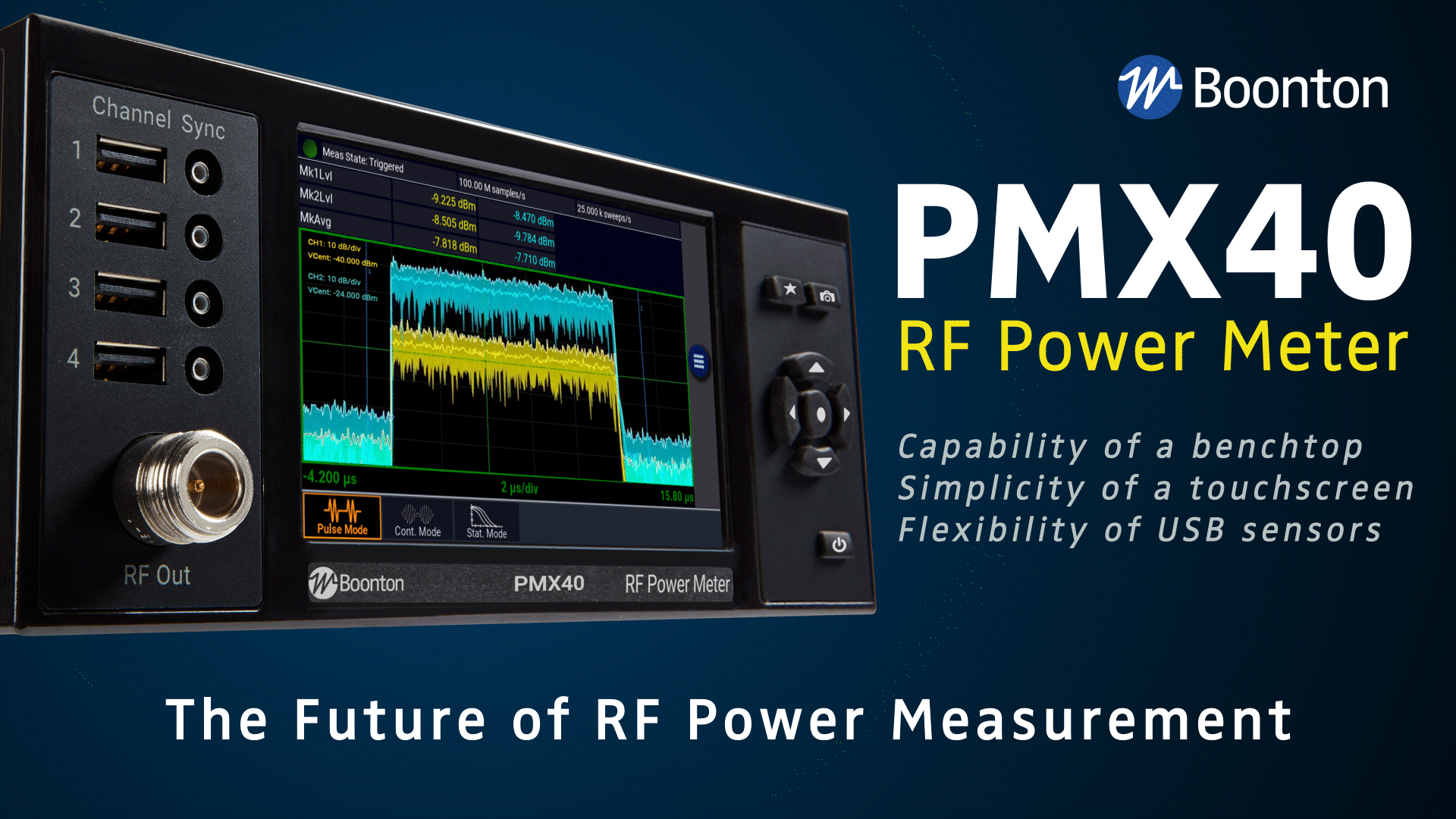RF power measurements have a hand in validating wireless designs, enhancing system efficiency and...
What Are the Most Important Capabilities for Test Instruments during Radar Testing?
In secondary surveillance radar (SSR) systems, a ground-based radar antenna transmits an interrogation signal toward an aircraft, requesting information such as the identity code or altitude. The aircraft’s onboard transponder sends an encoded reply back to the ground station.
From design to deployment, measuring RF power levels remains a constant need throughout an SSR system's lifecycle. In this post, learn about the test instrument capabilities that are best suited for each stage's requirements.
Radar Testing Needs
An SSR system goes through various stages, including design, installation, maintenance, and troubleshooting. Let's review essential test requirements that correspond to each stage.
| RADAR LIFECYCLE STAGE | TESTING NEEDS |
| Design | High performance |
| Installation | Portability |
| Maintenance | Multi-channel measurements and long measurement windows |
| Troubleshooting | High performance and portability |
Instruments that operate at the highest performance standards are highly valued during radar system design. Some key performance metrics include:
- Video bandwidth: An instrument’s video bandwidth (VBW) must be wide enough to capture the envelope power of pulsed radar signals. Instruments with the required VBW will track every rise and fall of the pulse, preserving envelope power, peak envelope power, and average power measurements.
- Rise time: The interval where a pulse changes from 10% to 90% of its magnitude is referred to as rise time. Instruments with fast rise times can track the complex signals of modern radar systems, even those with extremely narrow pulse spacing.
- Time resolution: Choosing instruments with the finest time resolution accurately represents waveform fidelity by characterizing interpulse timing and examining pulse shapes thoroughly.
During installation, technicians may need to climb around in aircraft or radomes, which are protective enclosures for radar antennas. At this stage, it is important to use test equipment that is easily carried or moved.
Once deployed, radar systems need regular maintenance to ensure reliable and consistent performance. In the case of SSR, federal agencies require periodic maintenance and calibration since these systems are used by air traffic control (ATC) to monitor, coordinate, and secure airspaces. Engineers and technicians must verify nominal power levels at various points in an SSR system, as illustrated in the block diagram below. As a result, maintenance-stage test instruments need to have multi-channel measurement capabilities.

Engineers can validate high-fidelity radar pulses during maintenance by capturing power measurements over long periods of time. Prolonged measurement windows can reveal important waveform details, such as signal droop, dropout, glitches, and changes in pulse timing.
If a serious fault in the system occurs, quick, accurate troubleshooting is needed to trace and correct all issues. High-performance instrumentation has the necessary tools to rapidly discover and identify problems. These failures can occur anywhere within an SSR system, so engineers may require a convenient, portable test device.
Radar Test Solutions
With various testing needs, engineers may opt to use different test devices when designing, installing, maintaining, or troubleshooting radar systems. Although each test device may have the desired capabilities, equipment costs will increase drastically. Results may also suffer from inconsistencies among devices. Alternatively, one instrument can be used at each stage, but if it lacks necessary features then accuracy, productivity, and efficiency will decrease.
The Boonton PMX40 RF Power Meter avoids compromises when measuring RF power and can be used during each radar lifecycle stage.

The PMX40 is a benchtop instrument with an intuitive touchscreen and multi-channel capabilities that utilizes high-performance USB RF power sensors. Key USB RF power sensor performance metrics include:
- Video bandwidth: 195 MHz
- Rise time: 3 nanoseconds
- Time resolution: 100 picoseconds
- Measurement speed: 100,000 measurements per second
With Boonton Real-time Power ProcessingTM, SSR pulses are captured and analyzed in virtually real time. When combined with free Measurement Buffer software, engineers can monitor radar pulses over long measurement windows.
In addition to use with the PMX40, engineers can even disconnect the USB RF power sensors and use them as standalone devices for testing.
On-demand Webinar: A New Approach to Radar Signal Analysis
Discover more about the PMX40's ideal capabilities for SSR testing in the on-demand webinar, “A New Approach to Radar Signal Analysis." Viewers will also learn how SSR systems function, the basics of RF power measurements, and historical RF power instrumentation.



